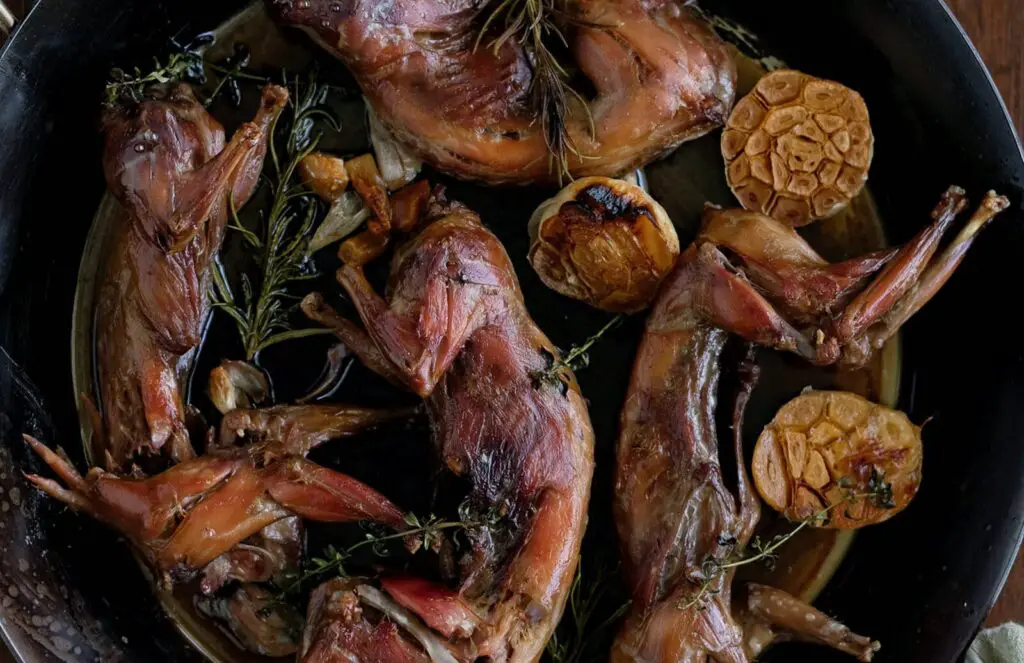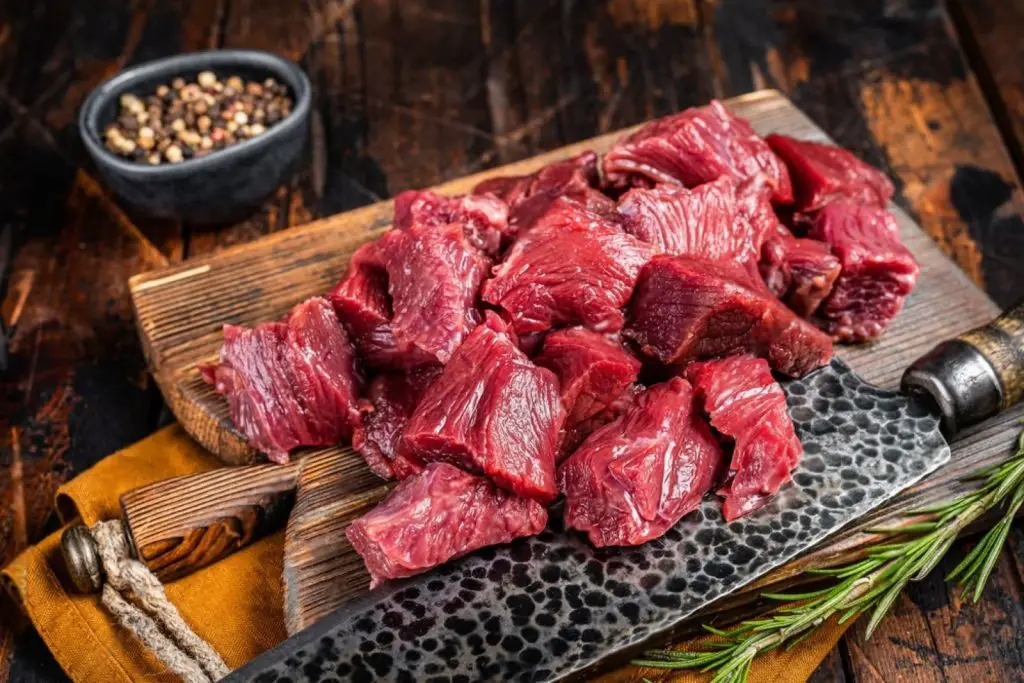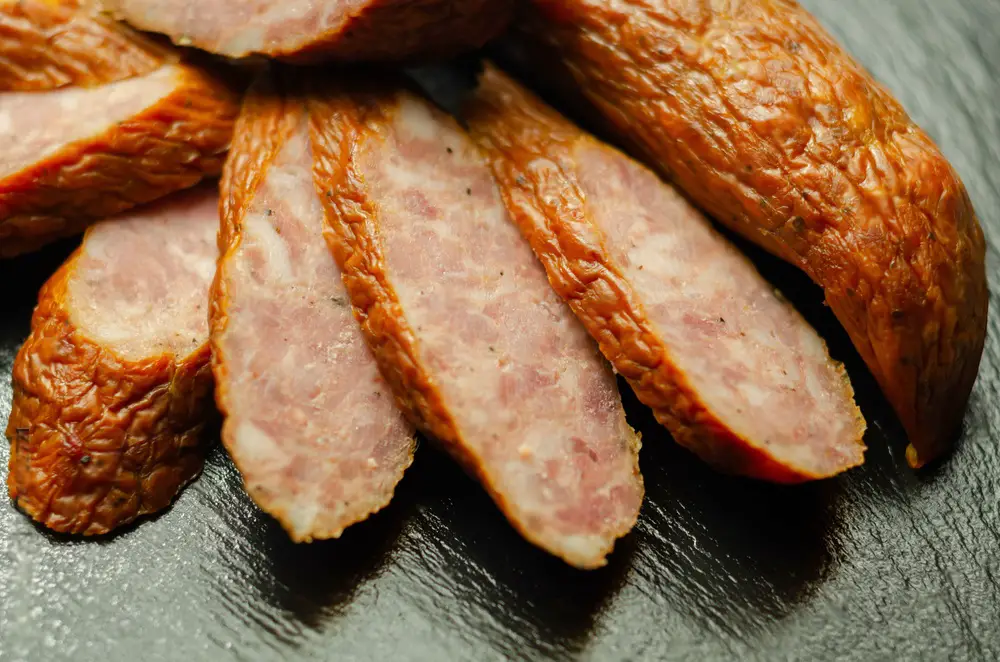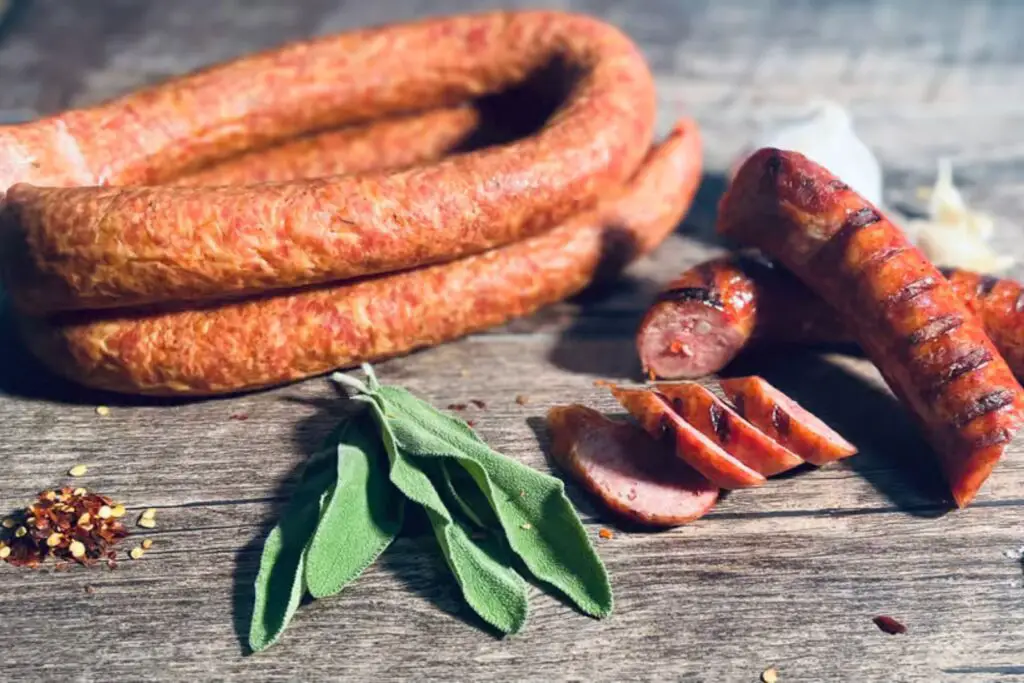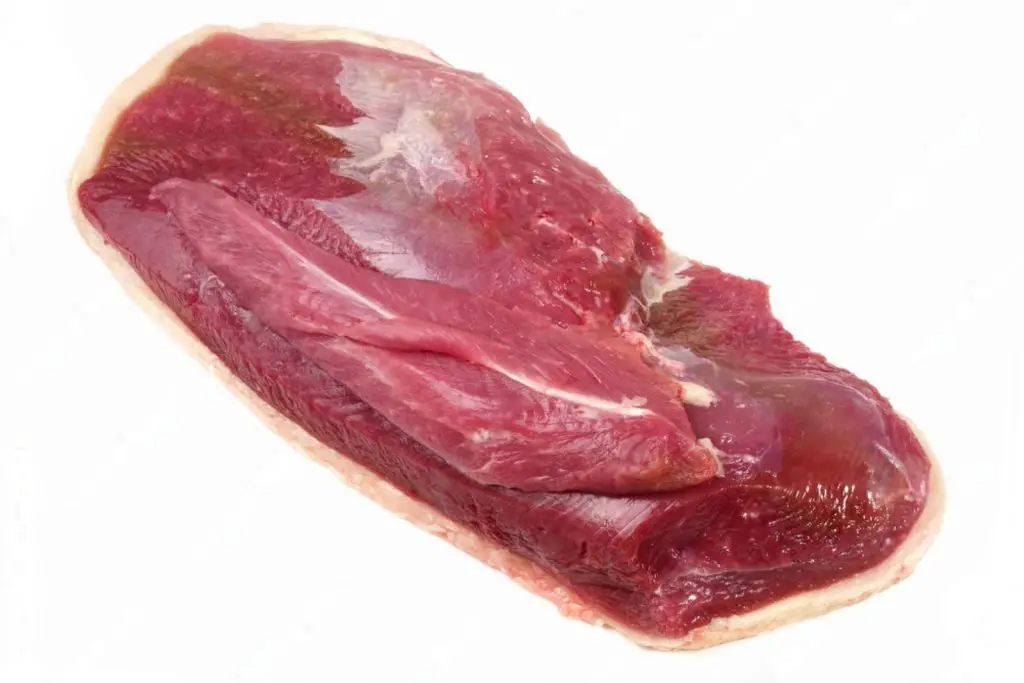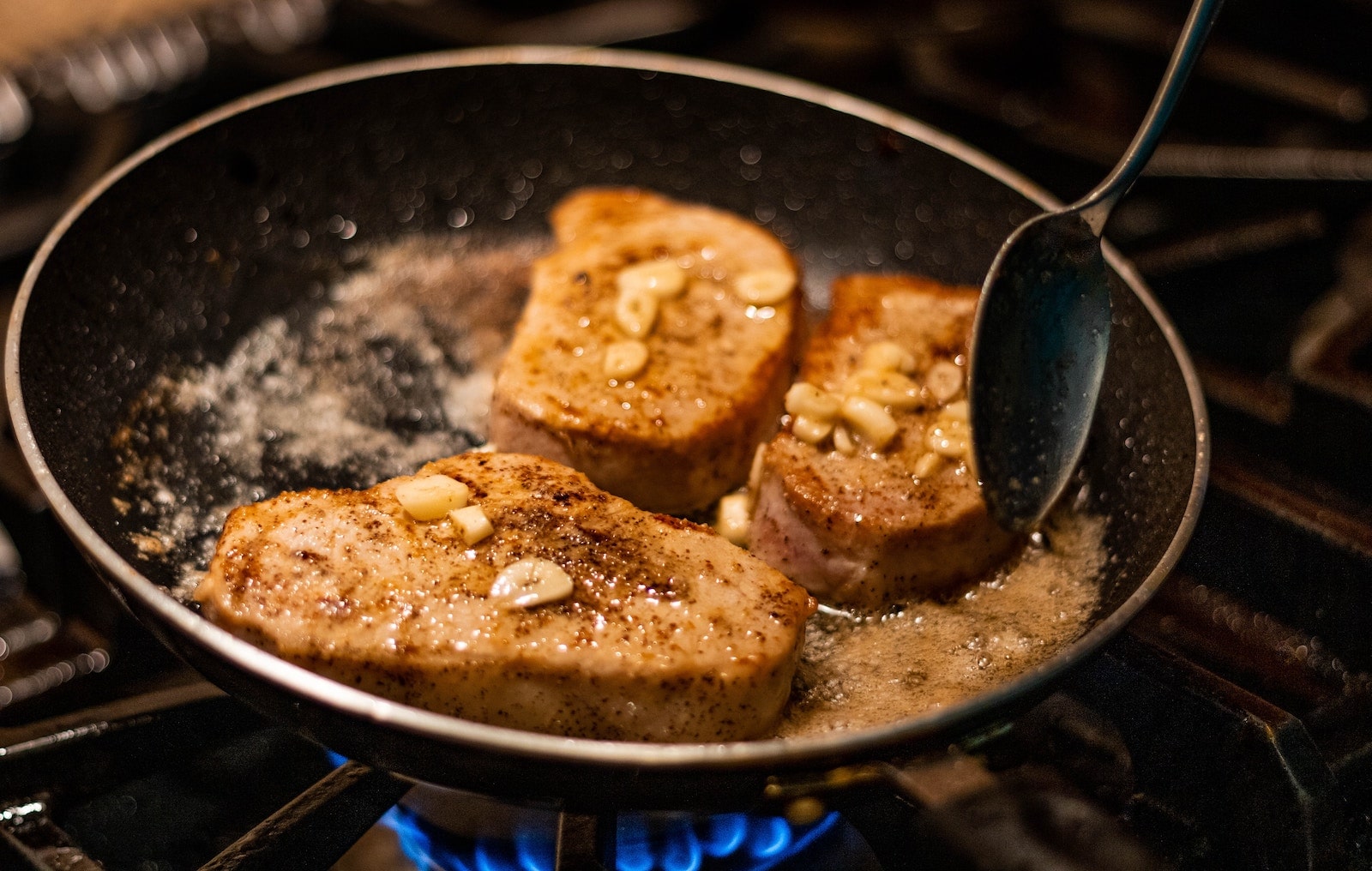
Pork chops are a popular cut of meat that comes from the loin of a pig. They are known for their juicy and flavorful characteristics, making them a favorite in many households. Pork chops can be prepared in various ways, such as grilling, pan-frying, or baking, making them a versatile ingredient for a range of dishes. Freezing pork chops is a great way to preserve their freshness and enjoy them even when they’re not readily available. This article outlines a comprehensive step-by-step guide on how to freeze pork chops while maintaining their quality and taste.
Here are the simple steps for freezing pork chops:
Step 1: Choose Fresh Pork Chops
When it comes to freezing pork chops, starting with high-quality, fresh cuts is essential to ensure that the frozen chops maintain their flavor and texture. Here’s why selecting the right pork chops matters:
- Quality and Flavor: Opt for pork chops that have a vibrant pink color. This color indicates freshness and suggests that the meat has not been sitting on the shelf for too long. Fresh pork chops also have a slightly moist surface. The natural moisture is a sign of the meat’s tenderness, which contributes to a more enjoyable dining experience once the chops are cooked.
- Marbling and Juiciness: Marbling refers to the small streaks of fat that are dispersed throughout the lean meat of the pork chop. This intramuscular fat not only adds flavor but also helps keep the meat juicy during the cooking process. When choosing pork chops, look for those with a reasonable amount of marbling. The fat melts as the chop cooks, infusing the meat with moisture and taste.
- Freezing and Cooking: Fat plays a crucial role in both freezing and cooking pork chops. During freezing, fat acts as a protective barrier against freezer burn, which can occur when the meat is exposed to air. Freezer burn can lead to changes in texture and flavor. The fat content in well-marbled pork chops helps prevent this by providing insulation. Similarly, when you cook the pork chops, the fat present in the meat contributes to a rich and savory taste.
- Texture Maintenance: As pork chops freeze, ice crystals can form within the meat’s cellular structure. The fat in well-marbled chops helps inhibit the growth of these ice crystals. When ice crystals are minimized, the cell walls of the meat are less likely to rupture, preserving the natural texture of the chops. This means that when you thaw and cook the chops, they are less likely to become overly dry or tough.
Step 2: Trim and Clean
Properly preparing pork chops before freezing is essential to maintain their quality and prevent any unwanted flavors or textures from developing during storage. Here’s why trimming, cleaning, and drying the pork chops are important steps:
- Excess Fat Removal: Trimming excess fat from the edges of the pork chops serves multiple purposes. While fat is necessary for flavor and juiciness, excessive fat can lead to uneven cooking and contribute to the development of off-flavors in frozen meat. Trimming excess fat creates a more uniform surface, allowing the pork chops to freeze and cook more evenly. It also prevents excessive dripping and flare-ups if you choose to cook the chops on a grill or in a pan.
- Debris and Blood Removal: Freshly cut pork chops might have remnants of bone, cartilage, or blood that can negatively impact their taste and texture during freezing. Rinsing the chops under cold water helps remove any debris or residual blood from the meat’s surface. This step is crucial for maintaining the cleanliness and purity of the chops, ensuring that they remain appetizing even after they are thawed and cooked.
- Hygiene and Safety: Properly cleaning the pork chops contributes to food safety. Blood and other contaminants can carry bacteria that might lead to spoilage or even foodborne illnesses if not addressed. Rinsing the chops and patting them dry reduces the risk of bacterial growth during freezing and storage.
- Drying for Freezing: After rinsing the pork chops, it’s important to thoroughly pat them dry with paper towels. Excess moisture can lead to the formation of ice crystals on the surface of the meat, which can affect its texture and taste. By drying the chops, you minimize the risk of freezer burn and maintain the integrity of the meat’s natural juices.
- Uniform Freezing: Moisture on the surface of the pork chops can also cause them to stick together in the freezer. When the chops are properly dried, they can be individually wrapped or separated with minimal risk of sticking. This allows you to easily retrieve the desired number of pork chops from the freezer without having to thaw them all at once.
Step 3: Wrap and Seal
Properly packaging pork chops before freezing is crucial to safeguard their quality and flavor. The process of individually wrapping and sealing the chops provides essential protection against freezer burn and helps preserve their texture and taste. Here’s why wrapping and sealing are vital steps in freezing pork chops:
- Freezer Burn Prevention: Freezer burn occurs when the surface of frozen meat is exposed to air, leading to the dehydration of the meat and the development of unappetizing textures and flavors. Wrapping each pork chop in plastic wrap or aluminum foil creates a barrier that prevents direct contact between the meat and the cold, dry air of the freezer. This barrier significantly reduces the risk of freezer burn, ensuring that your pork chops remain enjoyable to eat even after extended periods of freezing.
- Texture Maintenance: Proper wrapping and sealing contribute to maintaining the natural texture of the pork chops. The wrap or foil creates a protective layer that minimizes the formation of ice crystals on the surface of the meat. Ice crystals can cause the cell structure of the meat to break down, leading to a loss of moisture and tenderness. By preventing excessive moisture loss, the wrapped chops stay tender and succulent, resulting in a more satisfying eating experience.
- Flavor Retention: Oxygen exposure can lead to the oxidation of fats in the meat, causing changes in flavor and potentially resulting in an undesirable “freezer taste.” Wrapping and sealing the pork chops reduces their exposure to oxygen, helping to maintain their original taste and preventing any off-flavors from developing during freezing.
- Individually Wrapped Convenience: Individually wrapping each pork chop provides the convenience of taking out only the desired number of chops from the freezer without disturbing the rest. This prevents the need to thaw and refreeze a larger batch, which can compromise the quality of the meat.
- Resealable Freezer Bags for Added Protection: Placing the individually wrapped pork chops inside a resealable freezer bag provides an extra layer of protection against potential leaks, odors, and cross-contamination in the freezer. The airtight seal of the bag further reduces the chances of freezer burn and helps maintain the chops’ quality.
Can I freeze pork chops directly in their original packaging?
While possible, it’s recommended to repackage pork chops for optimal results. Original packaging might not provide sufficient protection against freezer burn. Airtight wrapping like plastic wrap or foil helps preserve quality during freezing.
Are vacuum-sealed bags a good option for freezing pork chops?
Vacuum-sealed bags are a recommended choice for freezing pork chops. They minimize air exposure, reducing the risk of freezer burn and maintaining meat quality. Airtight vacuum-sealing preserves texture, flavor, and overall freshness during storage.
Step 4: Label and Date
Properly labeling and dating your frozen pork chop packages might seem like a small detail, but it plays a significant role in maintaining organization, tracking freshness, and ensuring that you make the most of your frozen meat. Here’s why labeling and dating are essential steps in freezing pork chops:
- Fresher First: When you freeze a batch of pork chops, it’s likely that you won’t be using all of them at once. By labeling each package with the date of freezing, you create a clear record of when the meat was stored. This is crucial because frozen meat has a limited shelf life, even though it’s preserved much longer than fresh meat. When you label and date the packages, you can easily identify and use the oldest chops first, helping to prevent any from going past their prime.
- Quality Control: Over time, frozen meat can experience changes in flavor, texture, and overall quality. By knowing the freezing date, you can gauge how long the pork chops have been in the freezer and make informed decisions about whether they are still suitable for consumption. This awareness helps you avoid using meat that might have deteriorated in quality due to extended freezing.
- Reduced Food Waste: Accurate labeling and dating contribute to reducing food waste. When you can quickly determine the age of frozen pork chops, you’re less likely to forget about them or let them remain in the freezer for too long. This helps you make the most of your investment in quality meat and ensures that you use it when it’s at its best.
- Meal Planning: Proper labeling allows for effective meal planning. Knowing the freezing date helps you plan ahead by estimating how much time is left before the pork chops should be used. This information can guide your meal planning decisions, ensuring that you defrost and cook the pork chops in a timely manner.
- Easy Retrieval: Organized labeling not only helps you identify the age of frozen pork chops but also makes it easier to find what you’re looking for in a crowded freezer. You won’t have to rely on memory or guesswork when selecting meat for your next meal.
Step 5: Arrange in Freezer
The way you initially position and arrange your wrapped pork chops in the freezer can have a significant impact on their freezing process, preservation, and your overall freezer organization. Here’s why carefully arranging the wrapped pork chops is a crucial step in freezing:
- Preventing Sticking: Placing the wrapped pork chops flat in a single layer on a baking sheet or tray during the initial freezing stage prevents them from sticking together. As the pork chops start to freeze, any residual moisture or moisture from the packaging can cause them to adhere to one another. By arranging them individually on a tray, you ensure that they maintain their separate identities and don’t become a single frozen block.
- Individual Freezing: Freezing pork chops in a single layer allows each chop to freeze individually. Individual freezing is important because it minimizes the chances of ice crystals forming between the chops. When chops are stacked or placed too closely together during the initial freezing, ice crystals can develop between them, potentially leading to compromised texture and quality.
- Partial Freezing Before Stacking: Once the pork chops are partially frozen and have solidified a bit, you can stack them to save space in the freezer. Partially freezing the chops individually first ensures that they retain their shapes and don’t fuse together during stacking. Stacking frozen pork chops without partial freezing can result in misshapen or fused chops that are difficult to separate when you want to use them.
- Optimal Freezer Space Utilization: Stacking frozen pork chops is a practical way to maximize your freezer’s available space. Individually frozen and partially solidified chops are less likely to deform or stick together, making them easy to separate even after stacking.
- Convenient Retrieval: Proper initial arrangement and stacking make it easier to retrieve individual pork chops from the freezer without disturbing the others. You can take out only the number of chops you need, preserving the remaining chops for later use.
Step 6: Freeze
Freezing pork chops is a critical step in preserving their freshness, taste, and texture. The technique of flash-freezing, where the chops are rapidly frozen at a lower temperature, plays a key role in maintaining the quality of the meat. Here’s why the freezing process is crucial and how flash-freezing contributes to optimal preservation:
- Preserving Quality: Freezing pork chops is all about preserving their original quality as much as possible. Flash-freezing is a method that helps achieve this goal by minimizing the formation of large ice crystals within the meat. Large ice crystals can cause cell walls to rupture, leading to the loss of moisture and a subsequent change in texture when the meat is thawed and cooked.
- Rapid Temperature Reduction: When pork chops are placed on a baking sheet and put in the freezer, they are exposed to the extremely cold air, which causes their temperature to drop rapidly. Flash-freezing takes advantage of this rapid temperature reduction to minimize the size of ice crystals that form. Smaller ice crystals are less damaging to the meat’s cellular structure, helping the chops retain their moisture content and tenderness.
- Uniform Freezing: Flash-freezing promotes uniform freezing throughout the meat. This is important because uneven freezing can result in inconsistencies in texture and flavor. By freezing the pork chops quickly and evenly, you ensure that the entire chop maintains a consistent quality.
- Reduced Oxidation: Rapid freezing also helps reduce oxidation, which is the process of fats reacting with oxygen. Oxidation can lead to changes in flavor and the development of off-tastes. Flash-freezing minimizes the time the meat is exposed to oxygen, preserving the natural taste of the pork chops.
- Minimized Freezer Burn: Large ice crystals can contribute to freezer burn, which affects the overall quality of the frozen meat. Flash-freezing significantly reduces the chances of freezer burn by preventing the formation of ice crystals that can damage the surface of the meat.
- Thawing and Cooking Performance: Proper flash-freezing enhances the thawing and cooking performance of the pork chops. Smaller ice crystals lead to less moisture loss during thawing and cooking, resulting in a juicier and more flavorful end product.
Step 7: Store Properly
Proper storage of frozen pork chops is crucial for maintaining their safety, quality, and longevity. Once the pork chops are fully frozen, following the right storage practices ensures that they remain in excellent condition until you’re ready to use them. Here’s why proper storage matters and how to do it effectively:
- Safety and Quality Maintenance: Storing frozen pork chops at the appropriate temperature helps ensure that harmful bacteria do not develop. Freezing at or below 0°F (-18°C) inhibits the growth of microorganisms that can cause spoilage and foodborne illnesses. By maintaining a safe temperature, you protect the integrity of the pork chops and ensure they’re safe to consume when thawed and cooked.
- Preventing Freezer Burn: A freezer temperature of 0°F (-18°C) or below is also essential for preventing freezer burn. Freezer burn occurs when moisture within the meat evaporates and forms ice crystals on the surface, resulting in dry, discolored patches. By storing pork chops at the right temperature, you minimize the risk of freezer burn, preserving the meat’s texture and flavor.
- Long-Term Preservation: The designated section of your freezer for storing pork chops should be organized and free from temperature fluctuations. Avoid placing the chops near the freezer door or in areas where they might be exposed to warmer air when the freezer is opened. By storing them in a consistent environment, you extend their shelf life and maintain their quality over an extended period.
- Organization and Accessibility: Proper storage ensures that your freezer remains organized and that you can easily locate the pork chops when you need them. Consider using labels or dividers to keep different cuts of meat separate and easily identifiable. This organization minimizes the need to search through the freezer and allows for efficient meal planning.
- Minimized Freezer Odors: Proper storage practices help prevent cross-contamination between different foods in the freezer. Storing the pork chops in sealed, airtight packaging prevents their exposure to other odors and flavors present in the freezer. This ensures that the pork chops retain their intended taste and quality.
- Maximized Flavor and Texture: Storing pork chops at the correct temperature ensures that they maintain their optimal flavor and texture. When you’re ready to cook, the well-preserved meat will deliver the same delicious taste and tenderness you expect from fresh pork chops.
How long can pork chops last in the freezer?
Pork chops can last in the freezer for 6 to 12 months when stored at 0°F (-18°C) or below. Proper packaging and airtight seals enhance their longevity. Quality may decline after a year, but they remain safe to eat if properly stored.
Step 8: Thaw and Cook
Thawing frozen pork chops properly is essential to ensure even cooking, maintain flavor and texture, and ensure food safety. Once your frozen pork chops are ready to be cooked, follow the recommended thawing and cooking methods for the best results. Here’s why thawing and cooking in the right way matters:
- Even Cooking: Thawing pork chops before cooking allows for more even cooking throughout the meat. If you were to cook frozen pork chops directly, the exterior might cook faster than the interior, leading to uneven results. Thawing ensures that the entire chop reaches a consistent temperature, promoting even cooking and preventing overcooked exteriors and undercooked interiors.
- Texture Preservation: Gradual thawing in the refrigerator helps prevent the pork chops from becoming too watery during the cooking process. Rapid thawing using methods like warm water can cause the meat’s cells to rupture, leading to moisture loss and a less desirable texture. Thawing in the refrigerator allows the meat to defrost gently, preserving its natural juiciness and tenderness.
- Food Safety: Thawing frozen pork chops in the refrigerator is a safe method for preventing bacterial growth. It maintains a controlled temperature environment that discourages the rapid multiplication of harmful bacteria. This gradual thawing minimizes the risk of foodborne illnesses that can occur when meat is exposed to warmer temperatures for extended periods.
- Flavor Retention: Proper thawing contributes to preserving the natural flavor of the pork chops. Rapid thawing methods can leach out some of the meat’s natural juices, affecting its taste. Thawing in the refrigerator allows the pork chops to retain their full flavor profile.
- Preferred Cooking Method: After thawing, you have the flexibility to choose your preferred cooking method for the pork chops. Whether you prefer grilling, pan-frying, baking, or any other cooking technique, properly thawed pork chops ensure that the cooking process is consistent and yields delicious results.
- Safe Handling: Thawing pork chops in the refrigerator also minimizes the need for handling, reducing the risk of cross-contamination. It’s important to store thawing meat on a plate or in a container to catch any potential drips and prevent contact with other foods in the refrigerator.
What’s the best way to thaw frozen pork chops quickly?
The safest way to thaw frozen pork chops quickly is to use the defrost setting on a microwave. Alternatively, seal the chops in a waterproof bag and submerge them in cold water, changing the water every 30 minutes. Once thawed, cook immediately to ensure food safety.
Other related questions
Can I refreeze pork chops?
Refreezing pork chops is generally discouraged due to quality and safety concerns. Once thawed, bacteria can multiply, compromising safety. Refreezing may lead to loss of texture and flavor.
How do I know if the pork chops have gone bad after being frozen?
Look for changes in color, texture, or odor. If pork chops show signs of freezer burn, ice crystals, or off-putting smells, they may have deteriorated. When unsure, prioritize safety and discard to prevent potential foodborne illness.
Can I marinate pork chops before freezing?
Marinating before freezing is possible, but it’s more effective to marinate after thawing for better flavor absorption. Excess marinade can alter texture during freezing. Seal marinated chops in airtight containers or bags to prevent leaks and maintain freshness.
Can I freeze cooked pork chops?
Yes, cooked pork chops can be frozen. Allow them to cool before packaging and freezing to avoid moisture accumulation. Cooked pork chops can last 2 to 6 months in the freezer. Proper packaging and quick freezing maintain quality and flavor. Label with freezing date for reference. Reheat gently to prevent overcooking and maintain their original texture and flavor.
Can I freeze bone-in pork chops?
Yes, bone-in pork chops can be frozen. Wrap them individually in airtight packaging to prevent freezer burn and preserve quality. Freezing bone-in chops follows the same guidelines as boneless ones.

